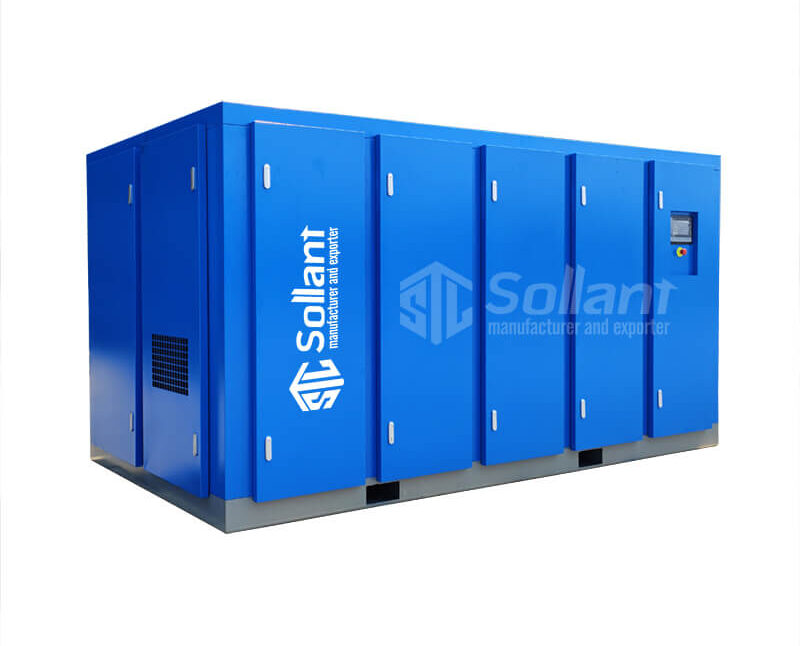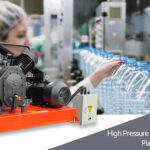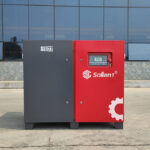Inhalation process
When the rotor rotates, the inter-tooth volume formed by the main and auxiliary rotors gradually expands, and this volume is only communicated with the suction port, and the outside air is sucked into the inter-tooth volume. When the volume between the teeth increases to the maximum, the volume between the teeth is disconnected from the suction port, and the suction ends. This is the “intake process”.
Closing and conveying process
At the end of the suction, the main and auxiliary rotor tooth peaks are closed with the casing, and the air in the volume between the teeth is sealed in the closed cavity composed of the main and auxiliary rotors and the casing, which is the “closed process”. The two rotors continue to rotate, the teeth of the main and auxiliary rotors mesh with each other, the meshing surface gradually moves to the exhaust end, and the air in the volume between the teeth is also transported to the exhaust end, that is, the “transportation process”
Compression and injection process
During the conveying process, with the rotation of the rotor, the volume between the teeth decreases continuously due to the meshing of the rotor teeth, and the volume of the gas in the volume between the teeth also decreases, the gas is compressed, and the pressure increases, which is the “compression process”. “. At the same time of compression, lubricating oil is sprayed into the tooth groove due to pressure difference and mixed with air.
Exhaust process
When the rotor turns to the volume between the teeth and the exhaust port of the casing, the compressed gas starts to be discharged, and this process continues until the profiles at the ends of the teeth are completely meshed. At this time, the volume between the teeth is zero, and the gas is completely discharged, that is Complete the “Exhaust Process”
Sollant Focus on Energy Saving



